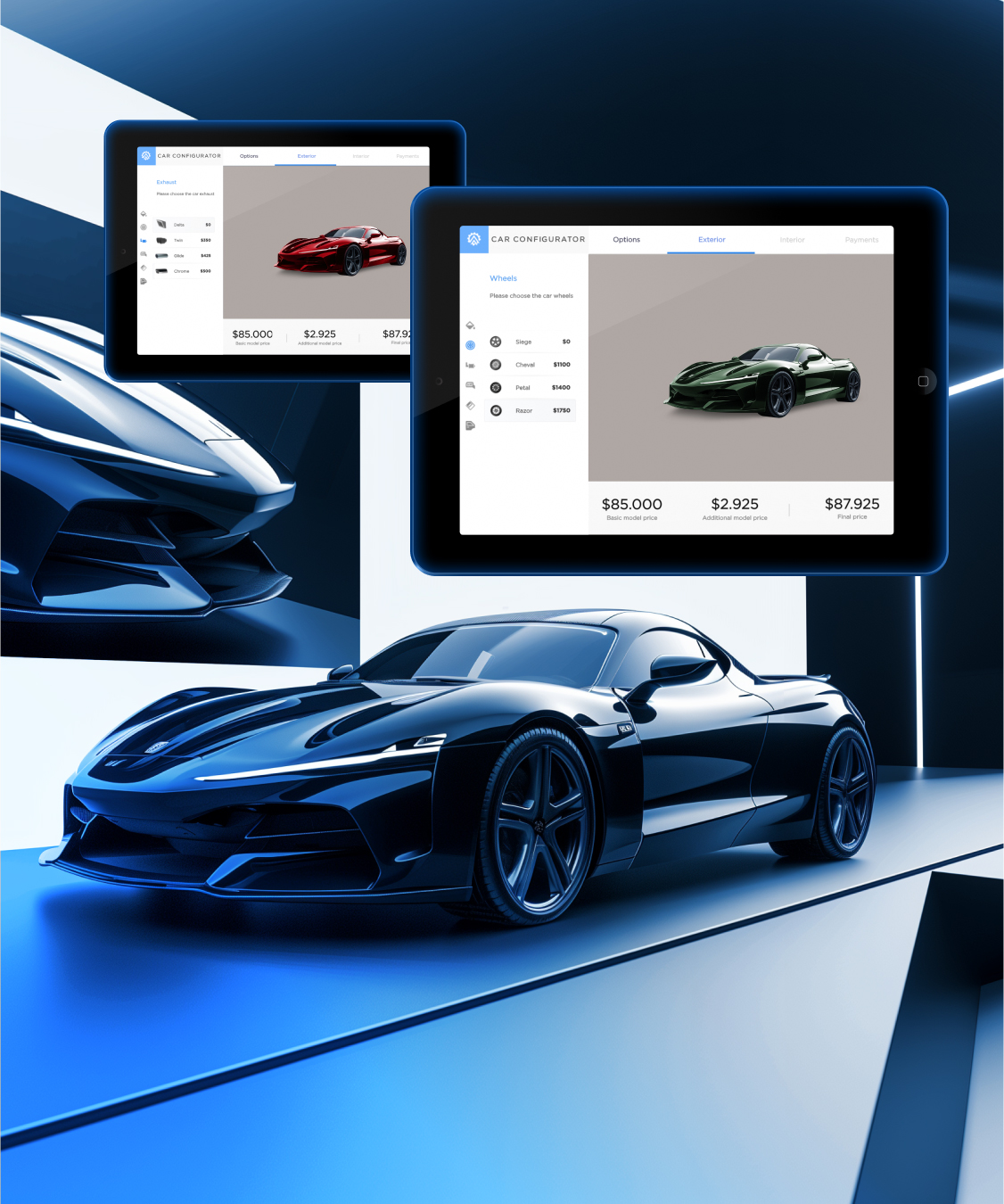
Master the Art of Online Car Configuration: Build Your Dream Ride, Stress-Free
Introduction:
In the age of digital convenience, dreaming of a new car has evolved beyond flipping through glossy brochures. Online car configurators have become powerful tools, allowing prospective buyers to virtually build their ideal vehicle from the comfort of their homes. However, the sheer number of options and features can feel overwhelming. This guide will equip you with the knowledge and strategies to navigate online car configurators effectively, ensuring you make informed decisions and create a vehicle that perfectly matches your needs and desires.
Understanding the Power of Online Car Configurators:
Online car configurators are interactive tools that allow you to:
- Visualize Your Ideal Car: See how different colors, trims, and accessories look on the specific model you’re interested in.
- Customize to Your Needs: Select the features that are most important to you, from engine type and safety systems to entertainment options and interior finishes.
- Estimate Costs: Get an idea of the price range for your custom-built vehicle, including the impact of each option on the final price.
- Compare Options: Easily compare different trims, packages, and individual features to determine what offers the best value for your money.
- Save and Share: Save your configurations to revisit later or share them with family, friends, or a dealership.
Step-by-Step Guide to Effective Car Configuration:
-
Start with a Clear Vision:
- Define Your Needs: Before diving into the configurator, ask yourself: What do I need this car for? Commuting, family trips, off-roading, or a combination?
- Set a Budget: Determine how much you’re willing to spend. Be realistic and factor in taxes, fees, and potential financing costs.
- Prioritize Features: Make a list of must-have, nice-to-have, and don’t-need features. This will help you narrow down your choices.
- Research Models: Read reviews, compare specifications, and consider factors like fuel efficiency, reliability, and safety ratings for different models that fit your needs.
-
Navigating the Configurator Interface:
- Choose Your Model: Select the specific model you’re interested in. Many manufacturers offer configurators for their entire lineup.
- Select a Trim Level: Trim levels represent different packages of features and upgrades. Research each trim to understand what’s included and what’s optional.
- Exterior Customization:
- Color: Experiment with different exterior colors to see how they look in various lighting conditions.
- Wheels: Choose wheel designs and sizes that complement the car’s style and your preferences.
- Exterior Options: Consider options like sunroofs, roof racks, spoilers, and special edition packages.
-
Interior Choices:
- Upholstery: Select your preferred seat material (cloth, leather, synthetic leather) and color.
- Interior Trim: Choose trim options for the dashboard, door panels, and center console.
- Seating Configuration: Consider options like heated/ventilated seats, power adjustments, and memory settings.
-
Performance and Technology:
- Engine Options: Research the available engine options and choose one that provides the right balance of power and fuel efficiency for your driving style.
- Transmission: Decide between manual and automatic transmissions based on your preference and driving conditions.
- Drivetrain: Consider front-wheel drive, rear-wheel drive, or all-wheel drive depending on your needs and the climate in your area.
- Technology Packages: Explore options like advanced driver-assistance systems (ADAS), premium sound systems, navigation, and connectivity features.
-
Safety Features:
- Standard Safety Features: Familiarize yourself with the standard safety features included in each trim level.
- Optional Safety Packages: Consider adding optional safety packages that include features like blind-spot monitoring, lane departure warning, and automatic emergency braking.
-
Packages and Standalone Options:
- Evaluate Packages: Manufacturers often bundle popular features into packages. Assess whether the package offers good value compared to selecting individual options.
- Standalone Options: Consider individual options that are not included in packages, such as a specific type of floor mats or a cargo organizer.
-
Review and Refine:
- Review Your Configuration: Carefully review all your selections to ensure they align with your needs and budget.
- Compare Configurations: Create multiple configurations with different options and compare them side-by-side.
- Adjust as Needed: Don’t be afraid to make changes. Experiment with different combinations until you find the perfect configuration.
-
Save and Share:
- Save Your Configuration: Save your configuration to your account on the manufacturer’s website.
- Print or Download: Print or download a PDF of your configuration for future reference.
- Share with a Dealer: Share your configuration with a local dealership to get a more accurate price quote and discuss availability.
Tips for Getting the Most Out of Online Car Configurators:
- Read Reviews and Research: Don’t rely solely on the configurator. Read reviews and research different models and features before you start building.
- Use Multiple Configurator Tools: Compare the configurators of different manufacturers to see which one is the most user-friendly and informative.
- Consider Resale Value: When choosing options, consider how they might affect the car’s resale value in the future.
- Don’t Be Afraid to Ask Questions: If you’re unsure about something, contact a dealership or consult online forums and communities for advice.
- Be Aware of Availability: Some options may not be available on all trim levels or may have limited availability due to supply chain issues.
- Visit a Dealership: The online configurator is a great starting point, but it’s essential to visit a dealership to see the car in person, take a test drive, and discuss pricing and financing options.
Conclusion:
Online car configurators are powerful tools that empower you to create the perfect vehicle for your needs and preferences. By following the steps outlined in this guide, you can navigate the configurator effectively, make informed decisions, and build your dream ride with confidence. Remember to do your research, prioritize your needs, and don’t be afraid to experiment with different options until you find the perfect configuration. Happy configuring!